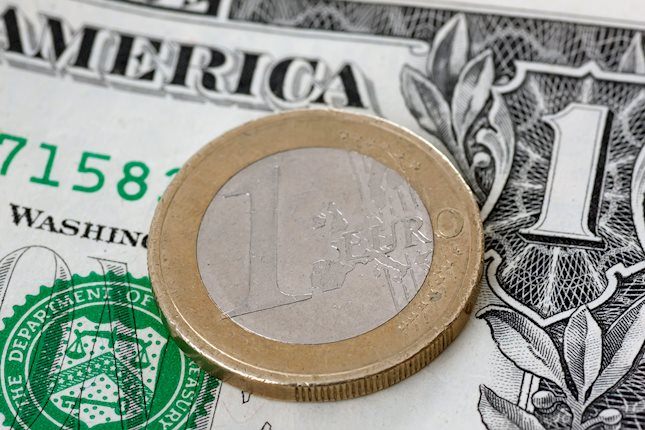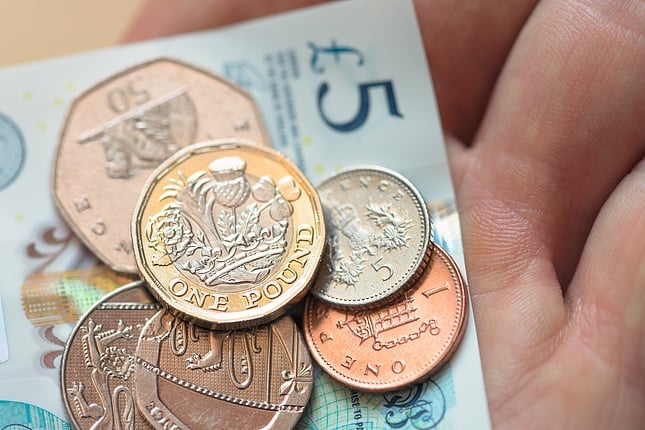Outlook
We had an “aha” moment yesterday when Fed chief Powell told a Texas conference “The economy is not sending any signals that we need to be in a hurry to lower rates. The strength we are currently seeing in the economy gives us the ability to approach our decisions carefully.
“Inflation is running much closer to our 2 percent longer-run goal, but it is not there yet. We are committed to finishing the job…. The path for getting there is not preset. In considering additional adjustments to the target range for the federal funds rate, we will carefully assess incoming data, the evolving outlook, and the balance of risks.”
Well, the balance of risks is known. It arises like smoke from Trump’s plans. Powell was trying to be subtle but it’s hard to miss the meaning of this: “We can do the arithmetic."
Granted, inflation shows up with a tremendous lag in wages (after immigrants are deported), in prices (after tariffs are imposed) and in the yields needed to stabilize the bond market (after taxes are cut and spending exploded). But the Fed is not dumb. It can see inflation coming back as well as the folks with the fanciest PHD’s.
The markets got the message. Last evening the probability of the Dec cut tanked to 58.9% from 82.5% the week before and the probability of rates being left unchanged zoomed to 41.1% from 17.5%. Again, the CME FedWatch numbers change are jittery. This morning the probability of the Dec cut rose to 62.1 from 58.9% last evening.
One currency effect of the Powell story was the refusal of traders to exit profitable long positions at the US close yesterday for the sake of shutting down overnight risk.
Realistically, the FX driver is Trump, not macro data, whatever the current data shows. It’s the expected future data that counts. The dollar jumped the day after the election and hasn’t stopped since then, to new 52-week highs. This is favorable, in part, to US consumers, making imports and foreign travel less expensive but harmful to US exports. It’s also harmful to the rest of the world and even outright destabilizing to those with dollar-denominated debt (just joined by China with dollar bonds sold exclusively in Saudi Arabia, which we find weird).
If the tariff promises are kept, they won’t necessarily inspire onshoring domestic investment, but rather just shift output from target China to other places, notably Vietnam, Thailand and Cambodia. “Near-shoring” Mexico has no idea what to do—will it be included in universal tariffs? But tariffs are a sales tax and are inherently inflationary, meaning the Fed must raise rates, drawing in yield-seeking capital. More than one bank and investment manager expect the euro to reach parity in the coming year.
The NYT identifies something important: “There could be lessons from Mr. Trump’s first term. The dollar also jumped after he was elected in 2016, accompanied by rising stocks and higher bond yields, a similar pattern to the “Trump trade” that has emerged recently. The dollar index rose more than 5 percent from Election Day to the end of that year.
“But political gridlock, despite Republican control of the House and Senate, led to a dollar that weakened by about 10 percent in 2017. The Trump trade became the ‘Trump fade’.”
We have a different economic configuration today. Then we had low growth and zero inflation. Now we have robust growth and sticky inflation. Obstacles to endless dollar gains abound. First is those tariffs. How will the tariff targets respond? The US may be big and powerful but others have teeth and claws, too. Not on the table yet is whether tariff retaliation takes the form of dumping Treasuries. While foreigners own about 25% of US debt, most of it is held by China, Japan and Middle East countries.
USA Today, a reliable source, reports “As of April 2024, the five countries owning the most US debt are Japan ($1.1 trillion), China ($749.0 billion), the United Kingdom ($690.2 billion), Luxembourg ($373.5 billion), and Canada ($328.7 billion). [The UK and Luxemburg have a large Middle East share]. Investors from Russia, China, and Indonesia had sharp drops in US Treasurys over the last several years due to sanctions and short-term capital needs, among other reasons.”
This is Fear #1—that big US Treasury holders will eschew the nice yield and safety of US paper in order to retaliate against tariffs. We wrote this exact same thing the first time around, when Trump won the presidency in 2016. It didn’t happen then and may not happen this time, either, but imagine how high yields would have to go if we combine retaliation with rising deficits.
Forecast
The consensus has it that Trump is one giant Risk, but while the press and commentariat carry hardly any other stories, markets had gone too far, too fast. We think the pullback today is a normal response to an overbought condition and an abnormally steep trajectory that was screaming for relief. Given comparative growth and other data, the dollar will resume the move after it retreats a little. Remember we get the Atlanta Fed GDPNow today for Q3, last at 2.5%. This tends not to move prices but by now everyone takes a look.
Political Tidbit: Some of Trumps’ choices for top position will not get through the Senate confirmation process, like Gaetz for attorney general and Gabbard for director of intelligence, both wildly unqualified, if subservient.
Even outfits like the WSJ are critical. Most of the outrageous selection reduce the credibility of Trump, not a high bar, is thought to cause immediate and measurable harm to the base. Slashing or eliminating the Dept of Education will raise property taxes everywhere, and Kennedy at health services spells cases of all kinds of vaccine-preventable diseases that will kill voters’ children. A small bright spot that Bloomberg acknowledges is Kennedy might be able to get rid of ultra-processed foods and some harmful ingredients like red dye. It might be fun to see Big Pharma squirm a little but realistically, RFK doesn’t have a prayer.
Hardly anyone in the Trump orbit can pass an ethics examination. Alas, the voting public knew that and didn’t put character high on the list. But on the whole, there is one okay outcome, though—these bad choices make the Dems certain to win the mid-terms.
Another tidbit: The NYT’s Krugman has an interesting take on the coming trade war (https://www.nytimes.com/2024/11/14/opinion/trump-china-tariffs.html).
Here is some of it:
“So the trade war is coming; in some ways it has already started. What will Trump add to the story?
“Ignorance, lack of focus and potential cronyism. Oh, and gullibility.
“Ignorance: Trump’s insistence that tariffs don’t hurt consumers — even as businesses across America are planning to raise prices when his planned tariffs hit — strongly suggests that neither he nor anyone he listens to understands how global trade works. Not a good thing at a time of trade conflict.
“Lack of focus: By proposing tariffs across the board, not on just China, Trump will raise costs for many American businesses and alienate allies who should be part of a cooperative response.
“Cronyism: The president has great discretion in granting tariff exemptions to selected companies. During Trump’s first term, such exemptions went disproportionately to companies with Republican political connections. It’s naïve to think this isn’t likely to happen again, and on a much larger scale.
“Finally, gullibility: During his first term, Trump eventually stopped raising tariffs after signing what he called a “historic trade deal” in which China agreed to buy $200 billion in American goods. How much of that total did China actually buy? None.
“As I said, serious trade conflict is coming as China tries to export its policy failures. But America just elected perhaps the worst possible leader to manage that conflict.”
This is an excerpt from “The Rockefeller Morning Briefing,” which is far larger (about 10 pages). The Briefing has been published every day for over 25 years and represents experienced analysis and insight. The report offers deep background and is not intended to guide FX trading. Rockefeller produces other reports (in spot and futures) for trading purposes.
To get a two-week trial of the full reports plus traders advice for only $3.95. Click here!
This morning FX briefing is an information service, not a trading system. All trade recommendations are included in the afternoon report.
Recommended Content
Editors’ Picks

EUR/USD holds on to intraday gains after upbeat US data
EUR/USD remains in positive ground on Friday, as profit-taking hit the US Dollar ahead of the weekend. Still, Powell's hawkish shift and upbeat United States data keeps the Greenback on the bullish path.

GBP/USD pressured near weekly lows
GBP/USD failed to retain UK data-inspired gains and trades near its weekly low of 1.2629 heading into the weekend. The US Dollar resumes its advance after correcting extreme overbought conditions against major rivals.

Gold stabilizes after bouncing off 100-day moving average
Gold trades little changed on Friday, holding steady in the $2,560s after making a slight recovery from the two-month lows reached on the previous day. A stronger US Dollar continues to put pressure on Gold since it is mainly priced and traded in the US currency.

Bitcoin to 100k or pullback to 78k?
Bitcoin and Ethereum showed a modest recovery on Friday following Thursday's downturn, yet momentum indicators suggest continuing the decline as signs of bull exhaustion emerge. Ripple is approaching a key resistance level, with a potential rejection likely leading to a decline ahead.

Week ahead: Preliminary November PMIs to catch the market’s attention
With the dust from the US elections slowly settling down, the week is about to reach its end and we have a look at what next week’s calendar has in store for the markets. On the monetary front, a number of policymakers from various central banks are scheduled to speak.

Best Forex Brokers with Low Spreads
VERIFIED Low spreads are crucial for reducing trading costs. Explore top Forex brokers offering competitive spreads and high leverage. Compare options for EUR/USD, GBP/USD, USD/JPY, and Gold.